 |
King of Chemicals Manufacturers |
Specifications, Properties, Uses, SDS of Gum Acacia or Gum Arabic USP NF BP Ph Eur IP JP EP FCC Food Grade Manufacturer Supplier Exporter Wholesale & Small Packs, CAS Number yyy. |
|
| King of Chemicals has several associated companies having accreditations like cGMP, GLP - FDA Approved Good Manufacturing Practice and Good Laboratory Practice of WHO standard, ISO-9001, ISO-14001, ISO/IEC 17025, ISO ISO-45000, HACCP, FSSC 220000, FSSAI, "REACH" Registered, Kosher & Halal Certified. e-CTD and DMF support can be made available if needed. We offer USP NF BP Ph Eur EP IP JP Analytical Reagent FCC Food Grade Chemicals & Nutraceuticals. | |
        |
|
Muby Chem Pvt. Ltd. is a several decades old group of companies, engaged in manufacturing, supplying, distributing, wholesale supplies of Gum Acacia or Gum Arabic USP NF BP Ph Eur IP JP EP FCC Food Grade for actual users, including retail or small pack supplies for research and development work.
We supply fine and speciality chemicals, pharmaceutical excipients, mineral fortifiers in chemically pure, analytical reagent grade, IP BP USP Ph Eur EP JP and other pharmaceutical grade monograph including FCC Food grade chemicals and Nutraceuticals at best prices. We and/or our associated units have all the facilities to supply as per cGMP standard observing good manufacturing practice and good laboratory practice. We can assure low microbial count and also offer a test certificate for the same. We maintain warehouses across USA, India, and UAE. Our group exports to USA, Canada, Mexico, Argentina, Brazil, Chile, Korea, Malaysia, Thailand, Indonesia, Europe, and several other parts of the world. We supply in wholesale container loads to small pack of few grams. Solid products may be specified for it size and shape as desired by the buyer.


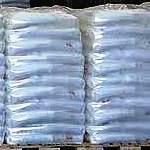
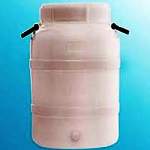
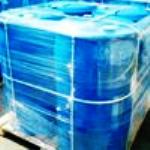
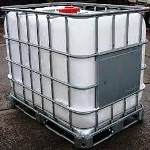
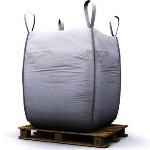
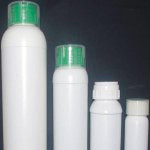
Gum Acacia or Gum Arabic CAS Number
For Properties Specifications Uses of Gum Acacia or Gum Arabic Click Properties, Specifications, Uses, Price, Process of Gum Acacia or Gum Arabic Manufacturer.
For For SDS MSDS Sheet of Gum Acacia or Gum Arabic Click SDS Safety Data Sheet MSDS Sheet of Gum Acacia or Gum Arabic Manufacturer.
The Properties, Specifications, Monograph and Uses of Gum Acacia or Gum Arabic:
Specifications of Acacia USP NF Grade:
DEFINITION
Acacia is the dried gummy exudate from the stems and branches of Acacia senegal (L.) Willd or of other related African species of Acacia (Fam. Leguminosae).
IDENTIFICATION
A.
Analysis: To 10 mL of a cold solution (1 in 50) add 0.2 mL of diluted lead subacetate.
Acceptance criteria: A flocculent, or curdy, white precipitate is formed immediately.
IMPURITIES
Arsenic, Method II: NMT 3 ppm
Lead: NMT 10 ppm
Botanic Characteristics:
Acacia: Spheroidal tears up to 32 mm in diameter or in angular fragments of white to yellowish white color. It is translucent or somewhat opaque from the presence of numerous minute fissures; very brittle, the fractured surface glassy and occasionally iridescent. It is almost odorless and produces a mucilaginous sensation on the tongue.
Flake Acacia: White to yellowish white, thin flakes, appearing under the microscope as colorless, striated fragments
Powdered Acacia: White to yellowish white, angular microscopic fragments with only traces of starch or vegetable tissues present
Granular Acacia: White to pale yellowish white, fine granules. Under the microscope it appears as colorless, glassy, irregularly angular fragments up to 100 µm in thickness, some of which exhibit parallel linear streaks.
Spray-dried Acacia: White to off-white compacted microscopic fragments or whole spheres
Microbial Enumeration Tests and Tests for Specified Microorganisms: Meets the requirements of the tests for absence of Salmonella species
Water Determination, Method III (Gravimetric):
Analysis: For unground Acacia, crush in a mortar until it passes through a No. 40 sieve, and mix the ground material before weighing the test specimen. Dry a sample at 105C for 5 h.
Acceptance criteria: NMT 15.0% of its weight
Articles of Botanical Origin, Acid-Insoluble Ash: NMT 0.5%
Articles of Botanical Origin, Total Ash: NMT 4.0%
Insoluble Residue:
Sample solution: Dissolve 5.0 g of powdered or finely ground Acacia in 100 mL of water. Add 10 mL of 3 N hydrochloric acid.
Analysis: Boil the Sample solution gently for 15 min. Pass by suction, while hot, through a tared filtering crucible. Wash thoroughly with hot water, dry at 105C for 1 h, and weigh.
Acceptance criteria: The weight of the residue thus obtained does not exceed 50 mg.
Starch or Dextrin:
Sample solution: A solution (1 in 50)
Analysis: Boil the Sample solution cool, and add iodine.
Acceptance criteria: No bluish or reddish color is produced.
Solubility and Reaction:
Sample: 1 g
Analysis: Dissolve the Sample in 2 mL of water.
Acceptance criteria: The resulting solution flows readily and is acid to litmus.
Tannin-Bearing Gums:
Sample solution: A solution (1 in 50)
Analysis: To 10 mL of the Sample solution add 0.1 mL of ferric chloride.
Acceptance criteria: No blackish coloration or blackish precipitate is produced.
Specifications Acacia Syrup USP NF Grade:
DEFINITION
Prepare Acacia Syrup as follows:
Acacia, granular or powdered: 100 g
Sodium Benzoate: 1 g
Vanilla Tincture: 5 mL
Sucrose: 800 g
Purified Water, a sufficient quantity to make: 1000 mL
Mix Acacia, Sodium Benzoate, and Sucrose. Add 425 mL of Purified Water, and mix. Heat the mixture on a steam bath until dissolved. When cool, remove the scum, add Vanilla Tincture and sufficient Purified Water to make the product measure 1000 mL, and strain, if necessary.
Microbial Enumeration Tests and Tests for Specified Microorganisms: Meets the requirements of the test for absence of Salmonella species
Specifications of Acacia BP Ph Eur Grade:
When Powdered Acacia is prescribed or demanded, material complying with the requirements below except for Identification test A shall be dispensed or supplied.
Action and use: Bulk-forming laxative; excipient.
DEFINITION
Air-hardened, gummy exudate flowing naturally from or obtained by incision of the trunk and branches of Acacia senegal L. Willd. (syn. Senegalia senegal (L.) Britton), other species of Acacia of African origin and Acacia seyal Delile.
CHARACTERS
Acacia is almost completely but very slowly soluble, after about 2 h, in twice its mass of water leaving only a very small residue of vegetable particles; the liquid obtained is colourless or yellowish, dense, viscous, adhesive, translucent and weakly acid to blue litmus paper. Acacia is practically insoluble in ethanol (96 per cent).
IDENTIFICATION
A. Acacia occurs as yellowish-white, yellow or pale amber, sometimes with a pinkish tint, friable, opaque, spheroidal, oval or reniform pieces (tears) of a diameter from about 1-3 cm, frequently with a cracked surface, easily broken into irregular, whitish or slightly yellowish angular fragments with conchoidal fracture and a glassy and transparent appearance. In the center of an unbroken tear there is sometimes a small cavity.
B. Microscopic examination. The powder is white or yellowish-white. Examine under a microscope using a 50 per cent V/V solution of glycerol. The powder shows the following diagnostic characters: angular, irregular, colourless, transparent fragments. Only traces of starch or vegetable tissues are visible. No stratified membrane is apparent.
C. Examine the chromatograms obtained in the test for glucose and fructose.
Results The chromatogram obtained with the test solution shows 3 zones due to galactose, arabinose and rhamnose. No other important zones are visible, particularly in the upper part of the chromatogram.
D. Dissolve 1 g of the powdered herbal drug in 2 mL of water by stirring frequently for 2 h. Add 2 mL of ethanol (96 per cent). After shaking, a white, gelatinous mucilage is formed which becomes fluid on adding 10 mL of water.
TESTS
Solution S: Dissolve 3.0 g of the powdered herbal drug in 25 mL of water R by stirring for 30 min. Allow to stand for 30 min and dilute to 30 mL with water.
Insoluble matter: Maximum 0.5 per cent.
Glucose and fructose: To pass the test by Thin-layer chromatography.
Starch, dextrin and agar: To 10 mL of solution S previously boiled and cooled add 0.1 mL of 0.05 M iodine. No blue or reddish-brown colour develops.
Sterculia gum: To pass the test.
Tannins: To 10 mL of solution S add 0.1 mL of ferric chloride solution. A gelatinous precipitate is formed, but neither the precipitate nor the liquid are dark blue.
Tragacanth: To pass the test by chromatograms.
Loss on drying: Maximum 15.0 per cent, determined on 1.000 g of the powdered herbal drug by drying in an oven at 105C.
Total ash: Maximum 4.0 per cent.
Microbial contamination:
TAMC: acceptance criterion 10000 CFU/g.
TYMC: acceptance criterion 10000 CFU/g.
Absence of Escherichia coli.
Absence of Salmonella.
Specifications of Spray-dried Acacia BP Ph Eur Grade:
DEFINITION
Spray-dried acacia is obtained from a solution of acacia.
CHARACTERS
It dissolves completely and rapidly, after about 20 min, in twice its mass of water. The liquid obtained is colourless or yellowish, dense, viscous, adhesive, translucent and weakly acid to blue litmus paper. Spray-dried acacia is practically insoluble in ethanol (96 per cent).
IDENTIFICATION
A. Examined under a microscope, in ethanol (96 per cent), the powder is seen to consist predominantly of spheroidal particles about 4-40 µm in diameter, with a central cavity containing 1 or several air-bubbles; a few minute flat fragments are present. Only traces of starch granules are visible. No vegetable tissue is seen.
B. Examine the chromatograms obtained in the test for glucose and fructose.
Results The chromatogram obtained with the test solution shows 3 zones due to galactose, arabinose and rhamnose. No other important zones are visible, particularly in the upper part of the chromatogram.
C. Dissolve 1 g of the drug to be examined in 2 mL of water by stirring frequently for 20 min. Add 2 mL of ethanol (96 per cent). After shaking a white gelatinous mucilage is formed which becomes fluid on adding 10 mL of water.
TESTS
Solution S: Dissolve 3.0 g of the drug to be examined in 25 mL of water by stirring for 10 min. Allow to stand for 20 min and dilute to 30 mL with water.
Glucose and fructose: To pass the test by Thin-layer chromatography.
Starch, dextrin and agar: To 10 mL of solution S previously boiled and cooled add 0.1 mL of 0.05 M iodine. No blue or reddish-brown colour develops.
Sterculia gum: To pass the test.
Tannins: To 10 ;mL of solution S add 0.1 mL of ferric chloride solution. A gelatinous precipitate is formed, but neither the precipitate nor the liquid shows a dark blue colour.
Tragacanth: To pass the test by chromatograms.
Loss on drying: Maximum 10.0 per cent, determined on 1.000 g by drying in an oven at 105C.
Total ash: maximum 4.0 per cent.
Microbial contamination:
TAMC: acceptance criterion 10000 CFU/g.
TYMC: acceptance criterion 100 CFU/g.
Absence of Escherichia coli.
Absence of Salmonella.
We also manufacture Gum Acacia or Gum Arabic IP EP JP Grade.
Specifications of Gum Arabic FCC Food Grade:
Acacia
INS: 414 CAS: 9000-01-5
DESCRIPTION
Gum Arabic occurs as a dried, gummy exudation obtained from the stems and branches of Acacia senegal (L.) Willdenow or of related species of Acacia (Fam. Leguminosae). The unground product occurs as white or yellow-white, spheroidal tears of varying size or in angular fragments. It is also available commercially as white to yellow-white flakes, granules, or powder. One-gram dissolves in 2 mL of water, forming a solution that flows readily and is acid to litmus. It is insoluble in alcohol.
Function: Stabilizer; emulsifier.
REQUIREMENTS
Identification: Add 0.2 mL of diluted lead subacetate to 10 mL of a cold 1:50 aqueous solution. A flocculent or curdy, white precipitate forms immediately.
Arsenic: Not more than 3 mg/kg.
Ash (Acid-Insoluble): Not more than 0.5%.
Ash (Total): Not more than 4.0%.
Insoluble Matter: Not more than 1.0%.
Lead: Not more than 5 mg/kg.
Loss on Drying: Not more than 15.0%.
Starch or Dextrin: Passes test.
Tannin-Bearing Gums: Passes test.
The MSDS-SDS Hazard Statement of Gum Acacia or Gum Arabic:
Gum Acacia or Gum Arabic or Karaya SDS, Safety Data Sheet
MSDS Sheet, Material Safety Data Sheet 17-Mar-25
Section 1: Chemical Product and Company Identification
Product Name & Other Names: Gum Acacia or Gum Arabic or Karaya
CAS Number: 9000-01-5
EINECS EC Code: 232-519-5
Relevant uses and uses advised against (if any): Industrial Manufacturing.
Supplier: American Molecules, 9910 Bent Oak Dr, Houston, TX 77040, USA.
Call Toll Free: 1-855-55-AMMOL 1-855-552-6665.
In case of emergency contact: Will be given with the supply.
Section 2: Hazards Identification
GHS, Globally Harmonized System Classification in accordance with 29 CFR 1910
Hazard Class and Category Code(s), Regulation (EC) No 1272/2008 (CLP)
Not a hazardous substance or mixture according to Regulation (EC) No. 1272/2008.
This substance is not classified as dangerous according to Directive 67/548/EEC.
Labeling Regulation EC 1272/2008 (CLP) & GHS
GHS Label Elements NONE |
Signal Word: None
Precautionary statements:
P261: Avoid breathing dust/fume/gas/mist/vapors/spray.
P262: Do not get in eyes, on skin, or on clothing.
P281: Use personal protective equipment as required.
P302+P352: IF ON SKIN: Wash with plenty of soap and water.
P304+P340: IF INHALED: Remove victim to fresh air and keep at rest in a position comfortable for breathing.
P305+P351+P338:- IF IN EYES: Rinse cautiously with water for several minutes. Remove contact lenses, if present and easy to do. Continue rinsing.
P337+313: If eye irritation persists get medical advice/attention.
Section 3: Composition and Information on Ingredients
Product Name & Other Names: Gum Acacia or Gum Arabic or Karaya
CAS Number: 9000-01-5
EINECS EC Code: 232-519-5
Section 4: First Aid Measures
Always seek medical advice after the first aid treatment.
Skin: Rinse with water. Soap may be used. Seek Medical Aid.
Eyes: Wash eyes with plenty of water for at least 15 minutes, lifting lids occasionally. Seek Medical Aid.
Inhalation: Remove to fresh air. If not breathing, give artificial respiration. If breathing is difficult, give oxygen.
Ingestion: If swallowed, induce vomiting immediately after giving two glasses of water. Never give anything by mouth to an unconscious person.
Section 5: Fire and Explosion Data
Flammability of the Product: Non-flammable. Will ignite at high temperatures. Air dust mixtures can be combustible.
Products of Combustion: Fumes and Oxides of Carbon.
Fire Fighting Media and Instructions: Use water spray, alcohol-resistant foam, dry chemical, or carbon dioxide. Wear self-contained breathing apparatus for firefighting if necessary.
Special Information: In the event of a fire, wear full protective clothing and NIOSH-approved self-contained breathing apparatus with full face piece operated in the pressure demand or other positive pressure mode. At high temperatures under fire conditions, it may produce toxic or irritating fumes. Fire-extinguishing work is done from the windward and the suitable fire-extinguishing method according to the surrounding situation is used.
Section 6: Accidental Release Measures
Personal precautions, protective equipment, and emergency procedures: Avoid breathing dust/fumes/gas/mist/vapors/spray. Ensure adequate ventilation. Use individual protective equipment (waterproof boots, suitable protective clothing, safety glasses, etc.). Restrict unprotected personnel from the area. Prevent any contact with hot surfaces. Do not approach facing the wind.
Environmental precautions: Do not let the product enter drains, soil, or water sources.
Methods and materials used for containment Cleanup procedures and Storage: Contain spilled material. Do not inhale vapors, mist, or gas. Avoid dust formation. Use a shovel to put the material into a convenient waste disposal container. Finish cleaning by spreading water on the contaminated surface and allow as per law.
Section 7: Handling and Storage
Precautions for safe handling: Apply according to good manufacturing and industrial hygiene practices. Ensure proper ventilation. Wash thoroughly after handling. Do not drink, eat, or smoke while handling. Avoid contact with skin, eyes, and clothing. Minimize dust generation. Avoid breathing dust/fumes/gas/mist/vapors/spray. Keep container tightly closed. Avoid ingestion and inhalation. Use individual protective equipment (waterproof boots, suitable protective clothing, safety glasses, etc.).
Conditions for safe storage, including any incompatibilities: Store in cool, dry, and ventilated area away from heat sources and protected from sunlight in tightly closed original container. Keep air contact to a minimum. Do not leave the material container open. Store protected from heat, sparks and ignition sources and incompatible materials. Avoid contact with skin and eyes. Avoid inhalation of dust/mist/vapor. Do not store with incompatible materials like oxidizing agents.
Section 8: Exposure Controls/Personal Protection
Exposure Guideline: Not established.
Engineering Controls: Use process enclosures, local exhaust ventilation, or other engineering controls to keep airborne levels low.
Personal Protection: Safety glasses. Lab coat. Dust respirator. Be sure to use an approved/certified respirator or equivalent Gloves.
Personal Protection in Case of a Large Spill: Splash goggles. Full suit. Dust respirator. Boots. Gloves. A self-contained breathing apparatus should be used to avoid inhalation of the product. Suggested protective clothing might not be enough; consult a specialist BEFORE handling this product.
Section 9: Physical and Chemical Properties
Physical state and appearance: White to faint beige powder or granules or lumps.
Odor: Not available.
Odor threshold: Not available.
pH (5% soln/water): around 5.
Relative density: 1.4
Melting point/freezing point: No data found.
Initial boiling point and boiling range: No data found.
Flash point: No data found.
Auto-ignition temperature: No data found.
Decomposition temperature: No data found.
Upper/lower flammability or explosive limits: No data found.
Vapor pressure: No data found.
Vapor density: No data found.
Evaporation rate: No data found.
Flammability (solid, gas): No data found.
Partition coefficient: n-octanol/water: No data found.
Solubility: Soluble in water.
Viscosity: No data found.
Section 10: Stability and Reactivity Data
Stability: It is stable in room temperature in closed containers under normal storage & handling.
Conditions of instability: Incompatible materials, Moisture
Incompatibility with various substances: Avoid high temperatures, sparks, open flame, and moisture. Avoid contact with strong oxidizing agents.
Polymerization: Will not occur.
Section 11: Toxicological Information
LD50 Oral - Rat - >16 g/kg.
Carcinogenic Effects: Not a reported carcinogen by IARC, NTP, ACGIH, OSHA.
Mutagenic Effects: No data found.
Developmental Toxicity: No data found.
Reproductive Effects: No data found.
Section 12: Ecological Information
Toxicity to fish: No data found.
Persistence and Degradability: Degradable.
Mobility: Likely to be mobile.
Bioaccumulation/ Accumulation: Not likely to accumulate.
Results of PBT and vPvB assessment: This substance/mixture contains no components considered to be either persistent, bioaccumulative and toxic (PBT), or very persistent and very bioaccumulative (vPvB) at levels of 0.1% or higher.
Section 13: Disposal Considerations
Waste Disposal: Waste must be disposed of in accordance with federal, state, and local environmental control regulations.
Section 14: Transport Information
Land Transport DOT USA, TDG Canada & ADR/RID Europe: Not dangerous goods.
Sea Transport IMDG/IMO: Not dangerous goods.
Air Transport IATA/ICAO: Not dangerous goods.
Section 15: Other Regulatory Information
USA:
SARA 311/312 Hazards: See section 2.
California Prop. 65 Components: This product does not contain any chemicals known to State of California to cause cancer, birth defects, or any other reproductive harm.
Section 16 - Additional Information
DISCLAIMER: The information and recommendations set forth herein are presented in good faith and believed correct as of the date hereof. It is compiled from various sources, and it is not necessarily all inclusive nor fully adequate in every circumstance. In addition, these suggestions should not be confused with nor followed in violation of applicable laws, regulations, rules, or insurance requirements applicable. This SDS MSDS sheet is intended only as a guide to the appropriate precautionary handling of the material by a professionally trained person using this product. Individuals receiving the information must exercise their independent judgment in determining its appropriateness for a particular purpose. This shall not constitute a guarantee for any specific product features and shall not establish a legally valid contractual relationship. In no case shall our company be liable to loss or damages by the product user.

Gum Acacia or Gum Arabic Manufacturers, Suppliers, Exporters, Wholesalers:
King of Chemicals manufacturers

Plot No. 2900/46&47 + 2900/163to167, GIDC, Ankleshwar, Dist. Bharuch, India
India, USA, UAE
TEL: (Office) 91-22-23774610, 91-22-23723564
e-mail: info@kingofchemicals.com
Copyright and Usual Disclaimer is Applicable --- March 17, 2025
If I give you “My Word” Nobody can undo it.
If I sign an “Agreement” my Lawyer will undo it
Our products are for industrial and laboratory use only. The user must test the material before use. We are not dispensing chemists or druggist and do not offer over the counter type (OTC) products for medical use by individuals.
We and our associates manufacture pure chemicals surpassing Monograph Specifications of Analytical Reagent Standards, British & European Pharmacopoeia BP Ph Eur EP Standard, US Pharmacopoeia USP NF Standard, Indian Pharmacopoeia IP Standard, Japan Pharmacopoeia JP Standard, FCC Food Grade Standard. |
|